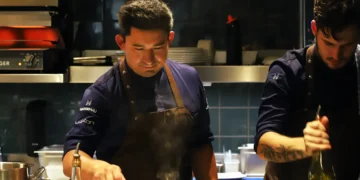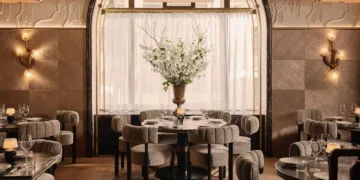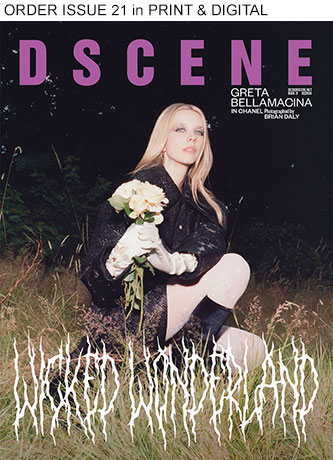
At Tohru in der Schreiberei, every detail matters. From the precise balance of flavors to the choice of glassware, Tohru Nakamura approaches fine dining with an obsessive attention to detail and a deep respect for both Japanese and European culinary traditions. Within its first year, the Munich-based restaurant earned two Michelin stars, a thanks to Nakamura’s vision and the team’s dedication.
RESTAURANTS
In this exclusive interview for DSCENE Magazine, Editor Katarina Doric sits down with Nakamura to discuss his evolving philosophy, the importance of omotenashi in shaping the guest experience, and how he continuously refines his craft. From kitchen innovation to the pursuit of perfection, Nakamura shares what drives him forward and what’s next for Tohru in der Schreiberei.
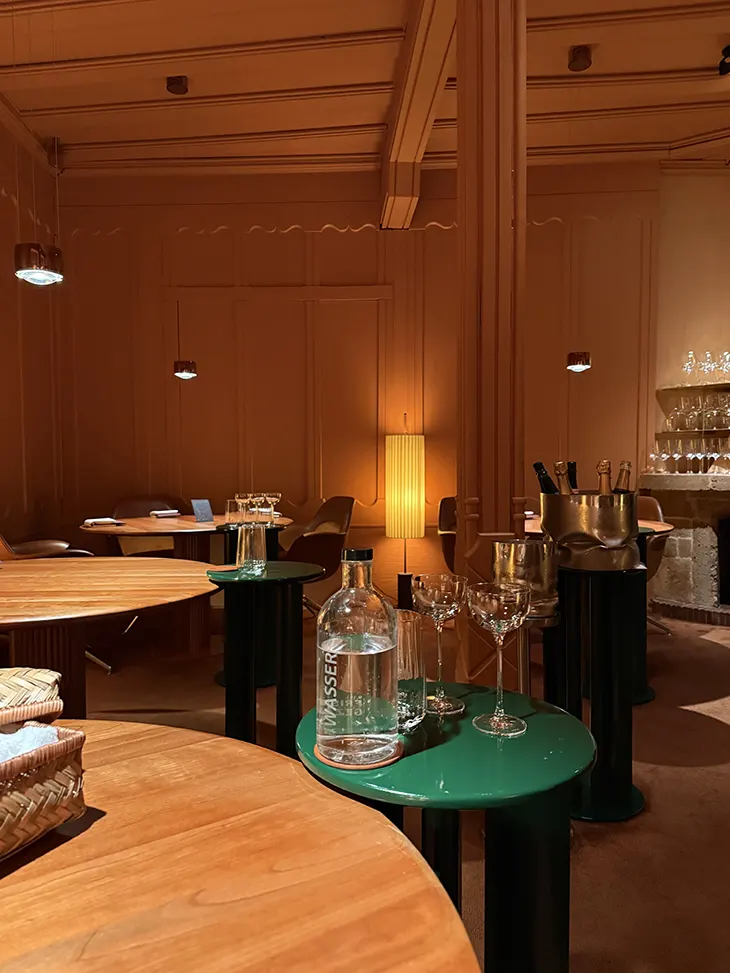
Your internship with Lea Linster was a pivotal moment early in your career. How did it shape your approach to cooking and inspire your passion for the craft? – My internship with Lea Linster was an eye-opening experience. Until then, I had a different perspective on gastronomy and cooking in general. I was always fascinated by cooking, and even as a small child, I loved being in the kitchen.
However, I never imagined a fine dining kitchen could be such an exciting place. This was about 25 years ago, a time when cooking wasn’t considered particularly cool in society, especially in Germany.
When I arrived at Lea Linster’s kitchen and had the opportunity to work with professional chefs during my summer holidays, it was an incredible experience. That moment became a turning point for me, solidifying my decision to pursue a career as a chef.
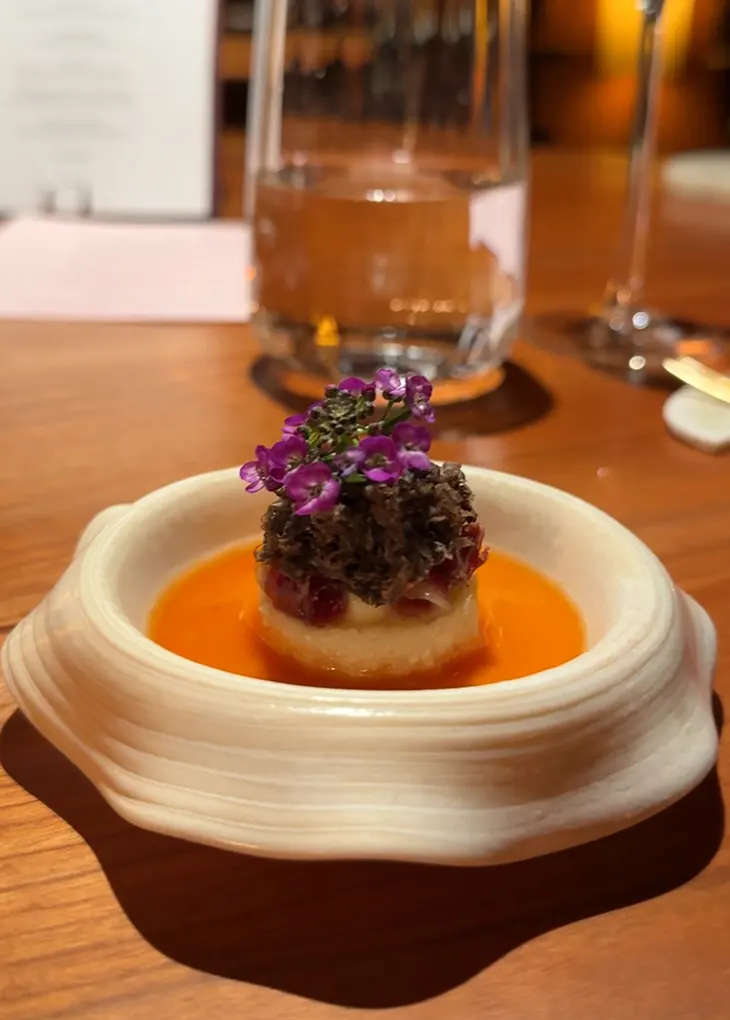
The history of Tohru in der Schreiberei is deeply intertwined with Munich’s heritage. How does the historical setting influence the dining experience you aim to create? – First of all, establishing our restaurant in this historically significant building wasn’t something we had meticulously planned, it happened more by coincidence. Due to the pandemic, our former restaurant closed, and we were looking for a new location. This space presented itself as a great opportunity to continue working with our entire team from the previous restaurant.
We initially started with a fine dining pop-up in this building, which allowed us to familiarize ourselves with the space, its size, character, and location. Now, after more than three years of working here, we’ve developed a deep connection with its almost museum-like atmosphere.
The fact that people were already living and working in this building nearly 450 years ago fills us with a profound sense of respect. It’s humbling and, at the same time, makes us proud to be part of its continuing history.
For me, old buildings always have stories to tell. The experience starts the moment you walk up the historic staircase, coming from the Burgstraße, the “Castle Street.” The architecture and surroundings immediately immerse our guests in the building’s history. Stepping through the old doorway and climbing the stairs, you can feel the past all around you.
I believe this historical context also influences our diners. It gives the space a sense of authenticity, something that has evolved over centuries rather than being constructed in a short period. This organic growth makes the restaurant feel welcoming and integrated into the city rather than an out-of-place addition.
We’re fully aware that we are based in Munich, and we take great pride in the incredible local produce available to us. We’ve built strong relationships with regional producers, and their ingredients are central to what we do. At the same time, we don’t hesitate to incorporate Japanese influences, whether through seasoning, techniques, or select imported ingredients, such as Japanese Wagyu.
Your German-Japanese heritage plays a key role in your culinary style. How do you balance the distinct traditions of both cultures in your dishes? – My professional training was primarily in European cuisine, which I pursued in Munich, near Cologne, and in the Netherlands. My Japanese culinary background, on the other hand, was more of a personal experience, something I grew up with at home rather than in a professional setting. I spent time in Japan visiting my grandparents, eating local food, and absorbing the culinary traditions, but I never worked extensively in Japanese kitchens.
That said, my appreciation for Japanese cuisine goes beyond just enjoying it, I’ve always been deeply interested in its techniques and flavors. Growing up between these two cultures, Japanese food was a natural part of daily life in our home. We had miso paste and soy sauce sitting right next to Bavarian sweet mustard in the fridge. It was never something exotic or unusual to use, it was just part of how we cooked.
This approach carries over to how we cook in the restaurant today. We’re fully aware that we are based in Munich, and we take great pride in the incredible local produce available to us. We’ve built strong relationships with regional producers, and their ingredients are central to what we do. At the same time, we don’t hesitate to incorporate Japanese influences, whether through seasoning, techniques, or select imported ingredients, such as Japanese Wagyu.
For me, balance is essential, not just in terms of flavors but also in the overall harmony of a dish. Every plate we create carries a touch of both cultures, seamlessly integrating their strengths while respecting their traditions.
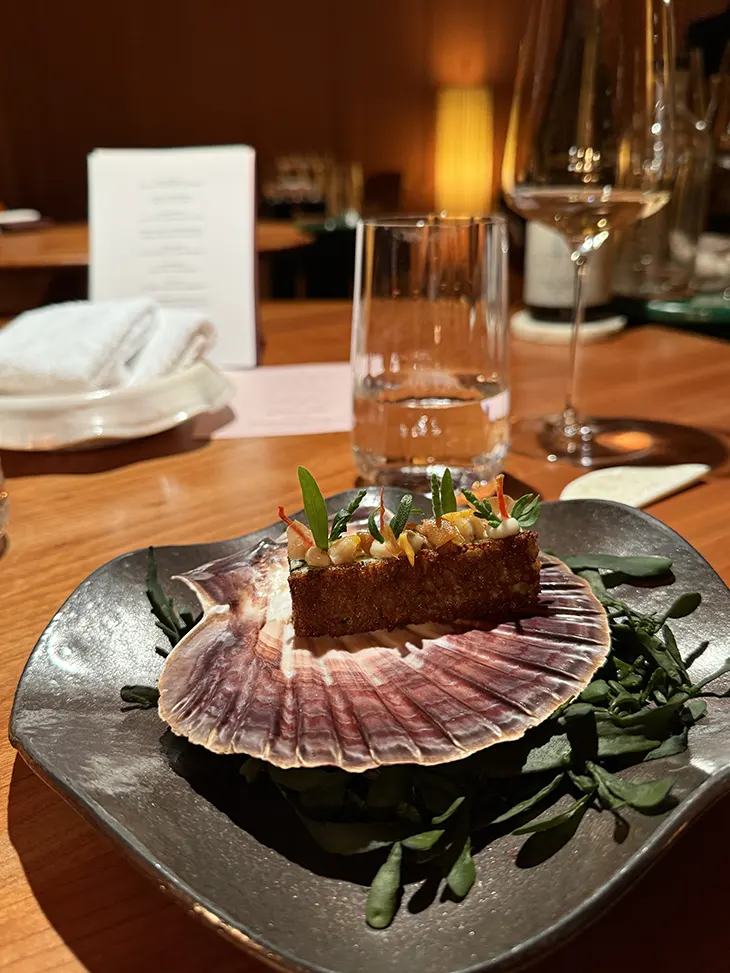
The philosophy of Kaiseki is integral to your cuisine. How do you adapt its principles to incorporate German and European flavors? – That’s a great question. The structure of a traditional Kaiseki menu is fundamental to how we approach our tasting menus. One key principle we follow is the sequencing of courses, unlike in European cuisine, where meals often start with lighter fish dishes, we introduce raw fish much later, typically around the fourth or fifth course. By that point, guests have already been served steamed, grilled, braised, or fried elements, allowing their palate and digestion to prepare for the full experience.
Our approach to menu structure is deeply influenced by Kaiseki traditions, but the incorporation of German and European flavors happens naturally. Using local ingredients means that these regional influences are always present, not as a forced contrast but as an organic integration.
For me, it’s not about a clash between these two culinary worlds but rather a seamless combination. This balance exists even in Japan, where traditional chefs have long adapted certain Western ingredients, like butter, into their cooking. So, incorporating German and European flavors into our Kaiseki-style menus feels like an intuitive evolution rather than a challenge.
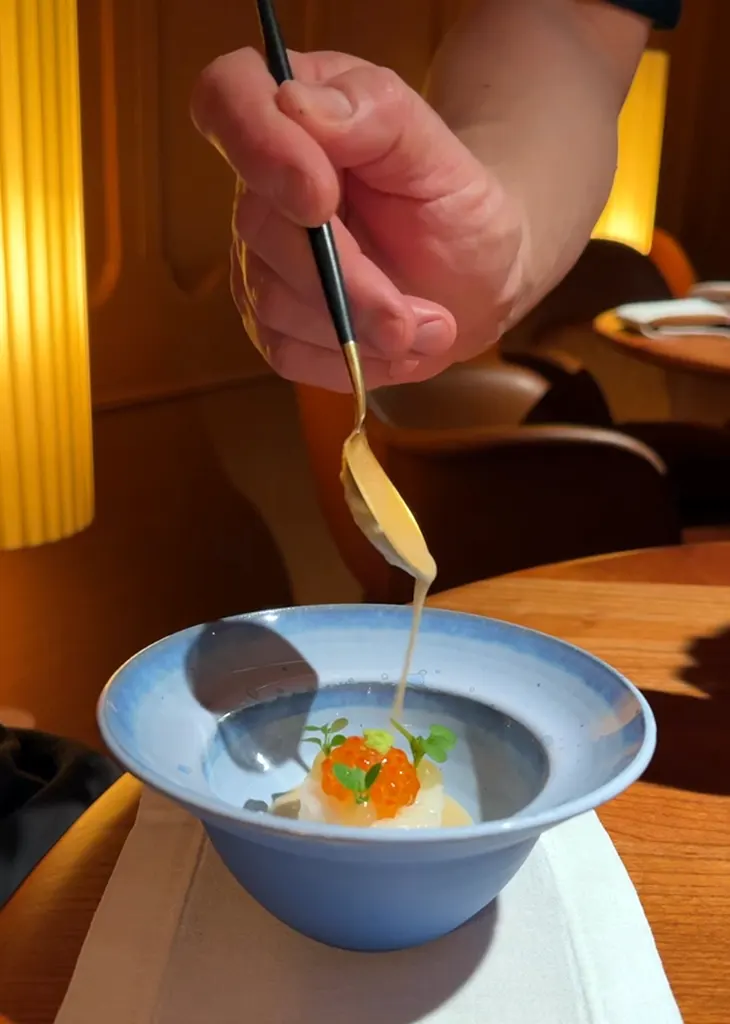
Sustainability and local sourcing are becoming increasingly important in fine dining. How do these values inform your ingredient choices and menu development? – Sustainability plays a crucial role in how we operate, influencing both our ingredient selection and the overall philosophy of our restaurant. We are highly conscious about avoiding products transported by air cargo, with a few rare exceptions like Japanese Wagyu, wasabi, and myoga. Beyond those, we prioritize local sourcing, especially when it comes to seafood, I prefer not to use fish flown in from Australia or Japan when we have such high-quality options available right here in Europe.
However, sustainability is not just about sourcing, it extends to every aspect of our restaurant. We take a mindful approach to waste management, reducing plastic usage, limiting cling film and tinfoil, and ensuring that we operate responsibly at all levels.
Sustainability also applies to how we manage our team. Respecting our employees means ensuring fair working conditions, reasonable hours, and fostering an environment where people can grow without being overworked. This, too, is a crucial part of maintaining a sustainable business.
Another major influence on our menu development is our partnership with a sustainable garden. Working with seasonal, responsibly grown produce not only inspires our dishes but also reinforces our commitment to sustainability in a way that goes beyond just ingredient sourcing.

Your plating is a work of art, so beautiful that it can make diners hesitate to take the first bite. What influences your presentation style, and how do you create such visually stunning dishes? – Thank you so much for the compliment! Though, of course, it would be quite sad if no one wanted to eat our dishes.
In the kitchen, our primary focus is always on taste. But in the second step, we work on making the dish as visually perfect as possible. I spend a lot of time thinking about how a dish should look when finished, imagining it in my head before we even start plating.
When we test new dishes, multiple chefs plate the same components in different ways, using different plates and arranging the elements in their own style. Afterward, the entire team, both front-of-house and kitchen, gathers in the dining room to discuss which version works best. We analyze whether everything should be layered on top of each other or spread out on the plate to allow each component to stand out individually.
It’s actually a lot of work and fine-tuning after the initial testing phase, but this process ensures that each dish is not only balanced in flavor but also visually refined.
Sustainability also applies to how we manage our team. Respecting our employees means ensuring fair working conditions, reasonable hours, and fostering an environment where people can grow without being overworked. This, too, is a crucial part of maintaining a sustainable business.
Your path includes working in some of the world’s finest kitchens, including Vendôme and Ishikawa. What lessons from those experiences do you bring to your own restaurant? – Just a quick clarification, at Vendôme, I worked for a little over two years, while my time at Ishikawa was just a short internship of about one and a half weeks before I became head chef at my previous restaurant. This is sometimes misunderstood, so I just wanted to clarify.
That said, I absolutely bring experiences from both of these restaurants, as well as every other place where I’ve worked or had the chance to observe behind the scenes. Every kitchen offers inspiration and valuable lessons.
At Vendôme, for example, everything was structured with extreme precision and discipline. The focus on perfection was very methodical and highly organized. In contrast, at Oud Sluis with Sergio Herman, it felt more like a rock-and-roll concert, spontaneous, energetic, loud, and hectic. If you’ve seen the documentary Fu*king Perfect about Sergio, you’ll understand exactly what I mean.
Each restaurant has influenced me in a different way. The structured perfectionism from Vendômeand the vibrant, high-energy atmosphere of Oud Sluis both shaped my own approach. I think from every place, there’s something valuable to take away, and those experiences continue to inspire how we run our kitchen today.
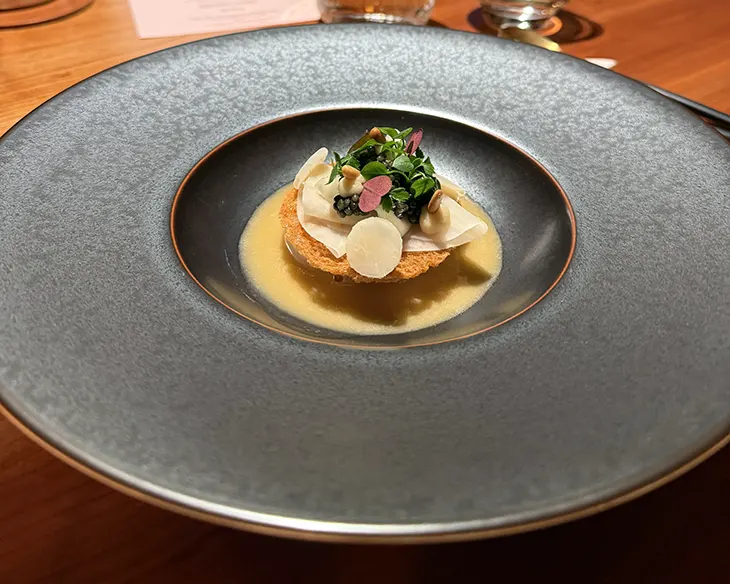
Tohru in der Schreiberei received two Michelin stars within its first year. What challenges did you face in achieving such high recognition, and how do you maintain those standards? – Well, first of all, it’s not just about me, it’s about the entire team. Every chef says this, but it’s true.
We didn’t change our team when we started at Toruna Schreiberei. While the location was new, the people working with us remained the same. We opened in December 2021, and by March or April 2022, we received two Michelin stars. It might seem like we earned them from scratch, but in reality, it felt more like a continuation of what we had already built. Before moving here, we had already held two stars, so in a way, we simply regained them.
The key factor was consistency, working with the same team, following the same philosophy, and maintaining the same standards we had developed before. We didn’t suddenly change our approach or style; we continued cooking with the same structure, mindset, and precision. When you do that, I believe the results should naturally be comparable to past achievements.
As for maintaining those standards, our focus isn’t on simply holding onto what we have, it’s on getting better. Every day, after service, we sit down as a team and discuss what worked well and what could be improved. The goal is always to be a little better tomorrow than we were yesterday, using what we learned from the day before.
For me, the idea of “maintaining” a standard is actually more stressful than striving for continuous improvement. If you only aim to maintain, you have to constantly question what’s good enough, and that uncertainty can be paralyzing. Instead, I prefer to keep pushing forward, refining and evolving each day.
The key factor is consistency, working with the same team, following the same philosophy, and maintaining the same standards we had developed before.
Your dishes are known for their meticulous attention to detail and innovative combinations. Can you share a recent dish that exemplifies your approach and the story behind it? – Thank you again for the compliment! It’s actually difficult to choose just one dish, but let’s go with the red prawn. The dish centers around Carabinero, a large, intensely flavorful red prawn from Spain. When developing it, we wanted to explore different types of crustaceans, playing with variations in flavor, size, and texture to create a refined and layered experience.
We start by using Norway lobster, or langoustine, to make a crustacean dashi from the shells. The tail meat is gently blanched in a seasoned saltwater liquid, then finely chopped and set into a jelly made from the dashi. Here, the precision is key, not just in how the meat is cut but also in how it’s seasoned, allowing the natural sweetness of the langoustine to come through.
To balance the richness, we add a Japanese kimisu, an egg yolk vinegar sauce that brings acidity to the dish. Then, we introduce raw crevettes, tiny shrimps from Brittany, that are lightly marinated with lime juice, lime zest, olive oil, and a touch of cayenne pepper to enhance their delicate flavor. We use every part of the Carabinero. The long, thin legs are dipped in tempura batter and deep-fried, creating crispy chips that add texture. The head and shells are used to make a velouté-style sauce, enriched with shallots, mushrooms, champagne, and roasted shells to intensify the depth of flavor.
Finally, the prawn’s tail is lightly grilled over hot charcoal, glazed with a mix of light soy sauce, rice vinegar, and a hint of charcoal oil for an extra smoky dimension. Every step is meticulously considered, from seasoning to texture to the precise cuisson of each component. This dish is a perfect example of our approach, highly detailed, balanced, and innovative, blending Japanese techniques with European elements. And, most importantly, diners seem to really love it!
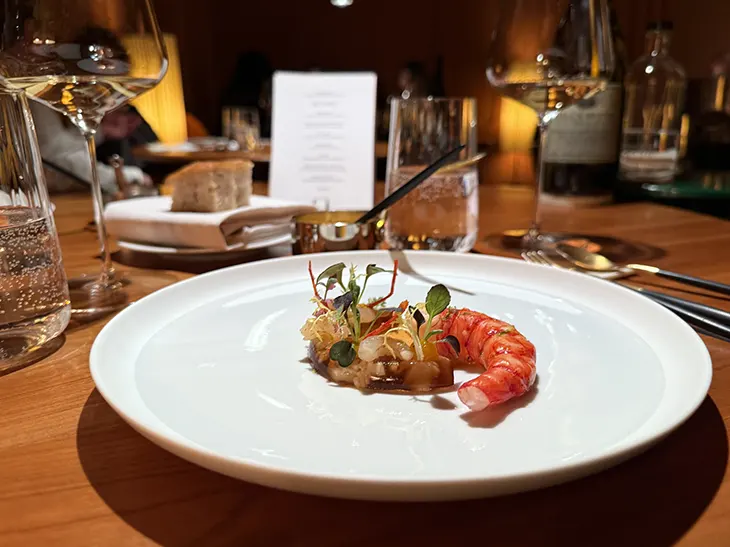
How do you work with your team to ensure every aspect of the dining experience reflects your vision? – It’s a lot about communication and inspiring people. I see myself as part of the team rather than standing above or separate from them. My role is to bring out the passion for what we do at the highest level and to ensure that everyone understands the standards we are striving for, as well as the expectations of our guests.
At the end of the day, I’m responsible for both the kitchen and front-of-house teams. With the kitchen team, it’s somewhat easier since I’m cooking alongside them every day, spending countless hours in the kitchen. With front-of-house, it requires a different kind of engagement. Fortunately, we have very talented leaders, Alex as restaurant manager and Chris as sommelier, who bring a lot of experience to the table. I work closely with them, brainstorming and discussing how we can elevate the dining experience and refine our customer service.
It’s a collaborative process, and I believe that shaping the team starts from the moment we select new employees. We look for people who will thrive in our environment, contribute to a positive atmosphere, and share a common sense of purpose. I hope, and believe, that people enjoy working here, not just with me but with their colleagues, and that shared commitment makes all the difference in creating a truly great team.
It never feels like work, it’s more like a passion that I get paid for, which is pretty amazing.
Do you enjoy cooking at home? – Yes, I love cooking at home. It’s one of the most enjoyable things I can imagine. Of course, on my days off, I also like going out for dinner, but cooking gives me a sense of relaxation. It never feels like work, it’s more like a passion that I get paid for, which is pretty amazing.
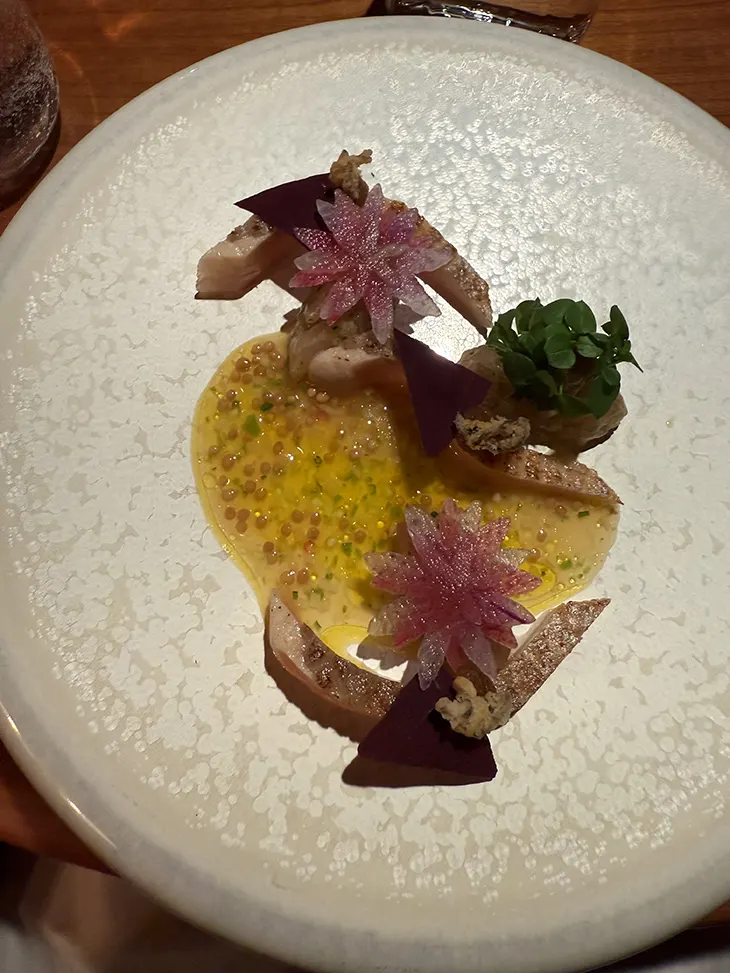
What do you typically prepare? – I often cook dishes that involve rice, usually Japanese-inspired meals. Something simple, like a hotpot, yesterday, for example, I made a Japanese hotpot with dashi, miso, radish, Chinese cabbage, tofu, and grilled salmon. But I also enjoy slow-cooking, like braising a nice piece of pork belly for hours until it’s tender and flavorful.
Italian cuisine is another favorite, I love making pasta. Honestly, I enjoy cooking all kinds of food. As long as I get to hold a knife or work with a pan, I’m happy. But if I had to choose, rice would probably be my favorite side dish.
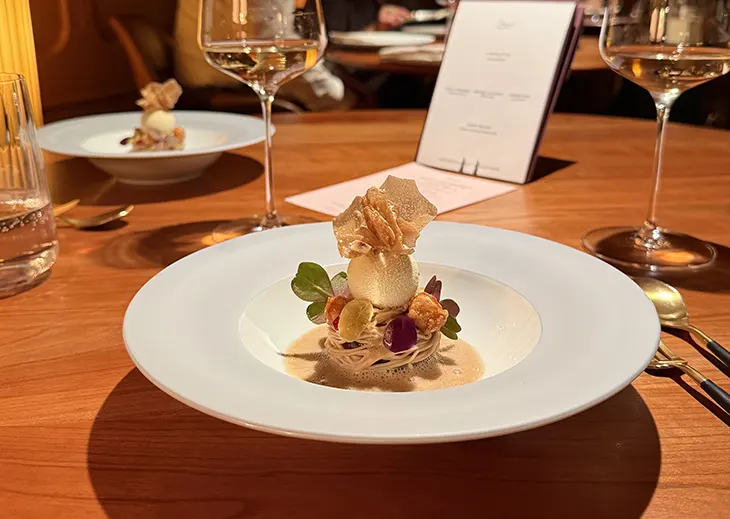
Do you ever enjoy guilty pleasures like fast food or other surprising treats that contrast with your refined culinary creations? – Of course! I don’t only eat refined, fine dining dishes all the time. I love going to Michelin-starred restaurants and visiting colleagues and friends who have stars, experiencing their incredible food. But I also enjoy simple, well-made food, street food, Bavarian dishes, Italian cuisine.
Just yesterday, I had an amazing pasta dish at a small Italian restaurant in Munich. It had sardines, raisins, onions, and parsley, such a great combination. I really respect simple food, as long as it’s made with care and passion.
As for guilty pleasures, I love ice cream. Not just artisanal Italian gelato, but even store-bought ice cream, it’s always available, which makes it easy. A few years ago, I used to eat ice cream or a chocolate bar when I got home from work, which wasn’t the healthiest habit. I don’t do that as much anymore, but I still enjoy it.
I don’t really see it as a guilty pleasure. Yes, I cook with high-quality, often expensive local ingredients, but that doesn’t mean I can’t enjoy a burger, pizza, or döner kebab. I simply love eating, whether it’s refined or casual, it’s all about enjoyment.
My philosophy is simple, if we can be just a touch better today than we were yesterday, then we’re on the right path.
When you’re not in the kitchen, how do you spend your free time? – During the workweek, from Tuesday to Saturday, I try to start my days with some exercise, running along the Isar, swimming, or other activities to clear my mind.
Of course, my role isn’t just about cooking. There are also meetings, events, and collaborations with companies, so my time is divided between the kitchen and other responsibilities.
When I do have free time, I spend a lot of it with my children. There’s always something to do, and since my time off is limited, I try to make the most of it.
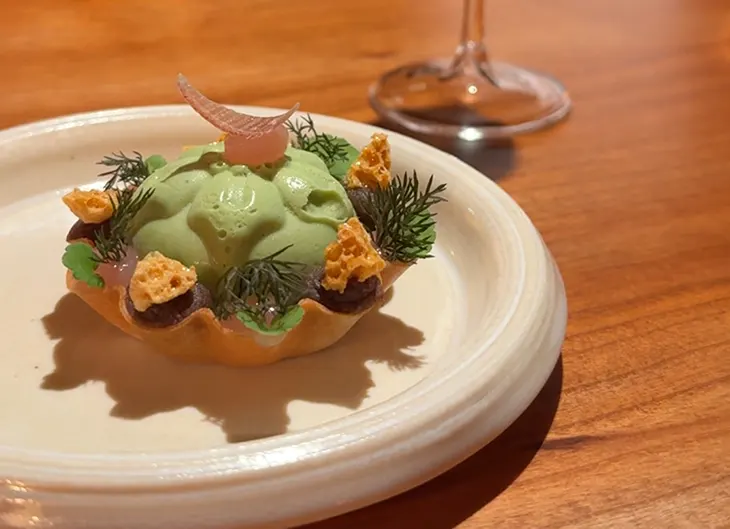
Looking to the future, what are your aspirations for Tohru in der Schreiberei, and how do you see your culinary philosophy evolving in the years to come? – I’m realizing more and more that our philosophy isn’t just about the food, it’s about the entire experience. In Japanese, there’s a concept called omotenashi, which refers to hospitality in a very deep and thoughtful way. It’s difficult to explain fully, but it goes beyond service, it’s about creating an atmosphere where every detail contributes to making guests feel truly welcome.
Right now, for example, we’re discussing what kind of glassware we should use for serving water. But then we ask: does it even have to be glass? What if we used ceramic, or maybe a Japanese teacup instead? These kinds of conversations are always happening. We’re thinking about the fragrance of the space, whether to introduce a subtle scent at the entrance, and if so, what kind. It’s an ongoing process of refining every element to create an environment that feels intentional and immersive.
At the end of the day, my goal is to make Tohru in der Schreiberei a restaurant that people from around the world want to visit, not just for the food, but for the full experience. I want guests to leave feeling something beyond just satisfaction. Ideally, they should leave with a sense of joy, emotion, and connection, wanting to return and relive the experience.
Of course, when you talk about aspirations, there are external recognitions like Michelin stars, The World’s 50 Best, and other rankings. Right now, we have two Michelin stars, and of course, there’s always the dream of that third star. But these things are difficult to control. Instead, we focus on what we can influence, making sure that every guest leaves feeling like they had an unforgettable evening with us. That’s where we put our energy.
Personally, I still love being in the kitchen, working in the restaurant, and being part of this industry. I hope that never changes. My plan is to keep shaping the restaurant day by day, improving little by little. My philosophy is simple, if we can be just a touch better today than we were yesterday, then we’re on the right path.

Tohru in der Schreiberei
Burgstraße 5, 80331 München, Germany
+49 89 21529172
kontakt@schreiberei-muc.de
schreiberei-muc.de
